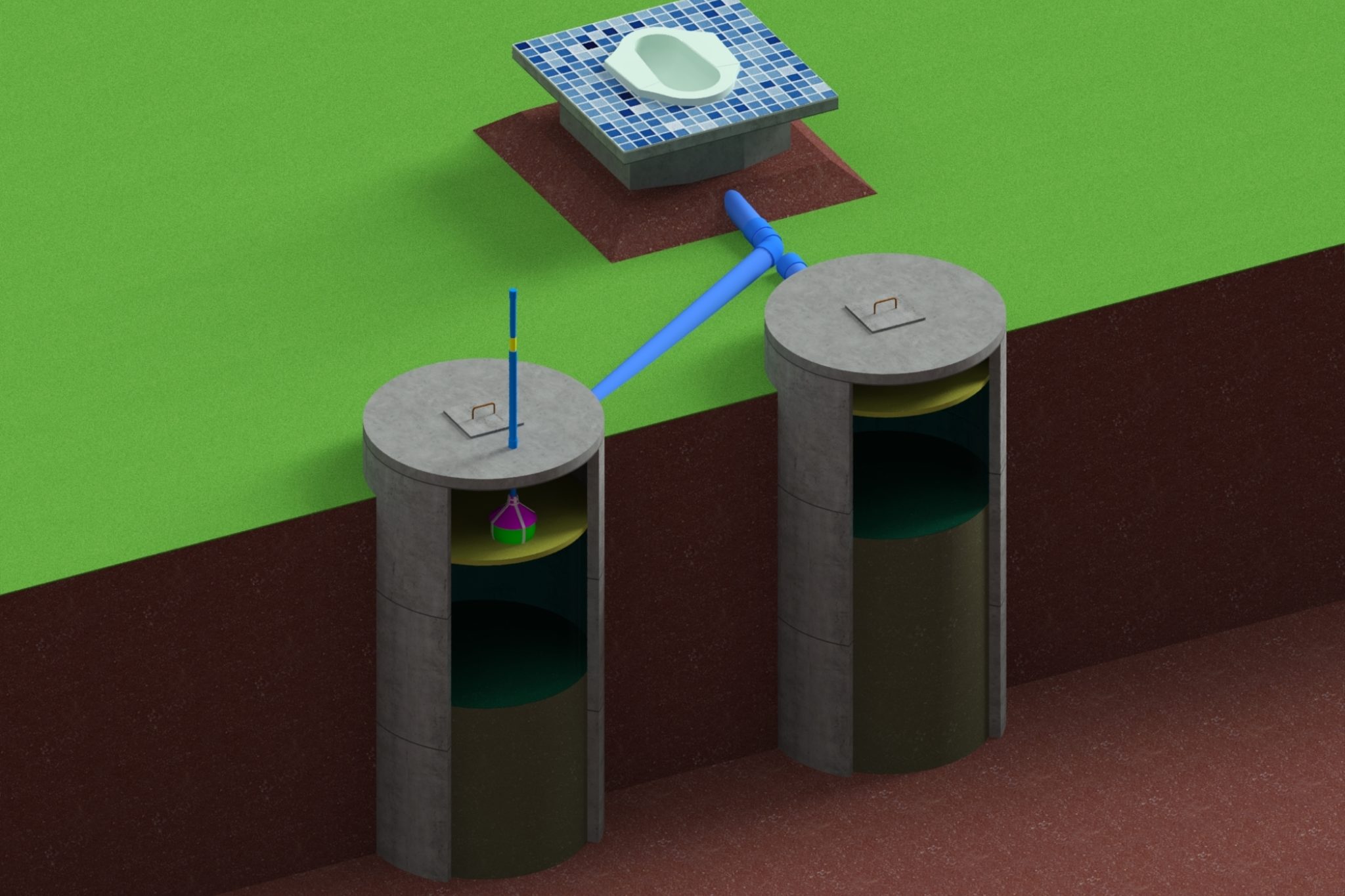How to deal with full latrine pits

With over 300,000 Easy Latrines sold, and countless other latrines in use, Cambodian households are now facing the issue of how to safely empty full latrine pits in the absence of affordable or safe treatment services. In 2014, iDE began researching the use of hydrated lime to treat fecal sludge, studying the lime supply chain, and diving into customer preferences around fecal sludge management (FSM). In 2016, iDE co-started an FSM group that evolved into a sector-wide technical group on FSM in Cambodia that is still functioning today. In 2018, iDE conducted a fecal sludge management pilot with the goal to reveal customer behavioral preferences towards FSM, learn about seasonal impacts on FSM, and investigate the desirability of a FSM product. Pilot activities included product and sales testing in addition to formative behavioral and contextual research. Throughout the duration of the pilot, researchers collected pit fill level data from over 220 latrines and delivered two rounds of in-depth behavioral surveys. Between the two surveys, over 1,200 observations were collected on questions including what customers had planned to do once the pit was full, the FSM options they had considered, and their willingness to pay (and how much) for each option.
iDE’s research revealed that 94% of households empty pits without professional/paid services, either emptying it on their own or having another family member do so. Households also have a seasonal issue with cash flow, and, depending on the time of year, will change their willingness to pay for professional pit emptying services. This seasonal effect coincides with increased household financial security when annual harvest incomes are realized.[Footnote 1] For example, in November, when the primary crop is grown and secondary crops sown, farmers earn little income and have increased work obligations. iDE observed that this is also the time in which intentions to pay for a professional pit emptying service were at their lowest, at 22% of those surveyed, compared to when harvests were sold in April, where 49% were willing to pay to have the pit emptied. Overall, professional pit emptying is perceived to be far too expensive (if available at all) and households prefer to pay less than $50 for professional emptying.
IRC, SNV, WaterSHED, PSI and other implementers have researched the FSM issue as well. Their research findings corroborate iDE’s learnings around pit emptying practices and willingness to pay, and support iDE’s approach of selling a product that minimizes the risk of amateurs or households themselves emptying latrine pits. The similar findings in different high-coverage areas (SNV/IRC focused on Kampot and Kampong Speu and iDE sampled in Svay Rieng) indicate that these household perceptions may be felt generally amongst high coverage areas. Given the complementary nature of this research, iDE plans to continue to compare our findings with other organizations and to collaboratively build a comprehensive base of FSM-related knowledge.
Based on this research, iDE refined its approach for delivery of the Alternating Dual Pit (ADP) upgrade product, iDE’s most promising option for a FSM solution in rural locations. By installing an additional latrine pit for households via an alternating pipe under the chamber box, the initial, full pit’s contents can decompose over time while the household utilizes the new, second pit. As an extra measure to reduce pathogens the old, full pit, is treated by mixing in hydrated lime. Eventually, when the new pit becomes full, the household can empty and dispose of the contents of the original pit in a hygienic manner. This solution prevents households and pit emptying service providers from needing to come into contact with hazardous, untreated human waste.
By mid-2018, 162 ADPs in total had been sold for $46, with an encouraging closing sales rate of 13.6%. iDE decided to increase the price to $49 for future scaling, and will continue to adjust the pricing strategy as needed to ensure uptake by both suppliers and clients. We’ve added a Pit Gauge (an external, visual indicator to draw attention to the pit when it is approaching its maximum fill level) with a modified, gauge-friendly pit lid in the purchase. It is our goal that this accessory will make the product more aspirational as well as help both households and sales agents identify pits that need to be serviced before the problem becomes an emergency.
Harper, James & Bielefeldt, Angela & Javernick-Will, Amy & Veasna, Toeur & Nicoletti, Chris. (2018). Intentions Toward Fecal Sludge Management in Rural Developing Communities.